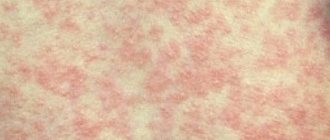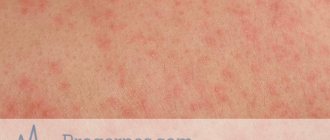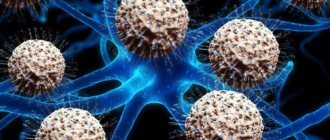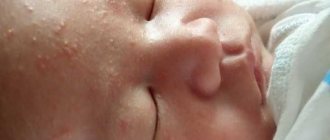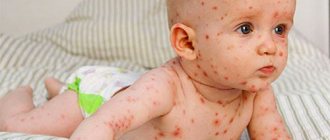For many parents, the name of this disease causes panic. And there is no need to talk about the emotional state of those mothers who heard the diagnosis of rickets. Meanwhile, the disease caused by vitamin D deficiency can be successfully treated if diagnosed at an early stage. We will talk about the causes, symptoms and treatment of rickets in infants, as well as methods of its prevention in our article. But first, let’s find out what kind of disease this is and what its consequences are for a growing organism.
What is rickets?
This disease is typical for children in the first year of life. It occurs as a result of a malfunction in the metabolic processes between calcium and fluorine and is accompanied by disturbances in the formation and strengthening of the baby’s skeletal system. If the symptoms of rickets in infants are ignored, the disease negatively affects the functioning of all organs and systems of the body.
The main reason for the failure of phosphorus-calcium metabolism is a lack of vitamin D. It is precisely what is necessary for the proper absorption of calcium by the body. As a result, softening of the bones and deformation of the entire musculoskeletal system occurs. If timely treatment is not carried out, the changes that occur will persist for the rest of your life.
The first symptoms of rickets in a baby are detected at 3 months or earlier. In general, this disease is more typical for children in the first year of life. But the reasons for its occurrence are not always related to a lack of vitamin D, but lie much deeper. And parents of children in their first year of life need to know about this in order to prevent the disease.
Causes and symptoms of rickets in infants
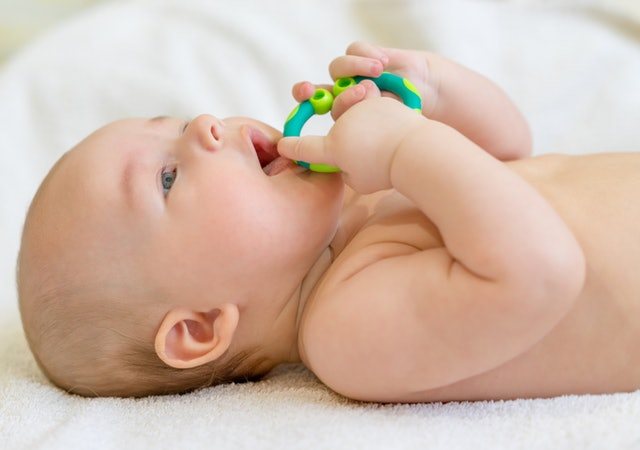
As mentioned above, the disease is caused by a lack of vitamin D (calciferol) in the baby’s body, the main functions of which are:
- ensuring the absorption of calcium by the cells of the intestinal mucosa;
- improvement of bone tissue mineralization;
- ensuring normal calcium-phosphorus metabolism;
- increasing immunity.
Under the influence of ultraviolet rays, vitamin D is independently produced by the body from provitamins. In addition, it enters the body with food. Its content is high in sea fish, caviar and fish oil, dairy products, eggs, butter and cheese. With proper nutrition and sufficient sun exposure in an adult, the need for calciferol is fully compensated.
As for infants, the main causes of vitamin D deficiency are as follows:
- Low intake of calciferol with food. Children who are bottle-fed with formulas low in calcium and phosphorus suffer more from vitamin D deficiency.
- Disruption of the process of its natural production in the body due to insufficient exposure to the sun.
- Poor absorption of calciferol by the body. The causes of this condition are dysbiosis, lack of lactase, celiac disease, long-term use of antiviral drugs and others.
- Genetic predisposition. At risk are boys, children born in the cold season, and those with blood group II.
- Complications during pregnancy. Poor nutrition, smoking, and drinking alcohol during gestation lead to disturbances in metabolic processes and malfunctions in the internal organs and systems of the baby.
- Premature birth. A premature baby does not receive enough vitamins, resulting in a deficiency.
It is difficult to determine the causes and symptoms of rickets in an infant in the photo above. Therefore, it is not enough to make a correct diagnosis based only on external signs. The disease must be confirmed by clinical and biochemical tests of blood, urine, etc.
Rickets. Nursing care plan for rickets
Rickets does not pose a danger to the life of a child, but in the absence of adequate treatment, this disease can leave a mark for life - noticeable skeletal deformations, malocclusion, flat feet and other similar disorders.
Causes and predisposing factors:
- Lack of sun exposure and exposure to fresh air, because 90% of endogenously formed vitamin D in the body is synthesized in the skin under the influence of UV.
- Nutritional factors: artificial feeding with unadapted formulas; untimely introduction of complementary foods; one-way feeding (carbohydrate, vegetarian)
- Perinatal factors: prematurity of the child - the most intense supply of calcium and phosphorus from mother to fetus occurs in the last months of pregnancy.
- Insufficient motor activity as a result of perinatal damage to the nervous system, as well as the lack of elements of physical education (massage, gymnastics).
- Diseases of the gastrointestinal tract, leading to the development of intestinal dysbiosis and impaired calcium absorption.
- Environmental factors - an excess of strontium, lead, zinc and other metals in soil and water, food products leads to their partial replacement of calcium in the bones.
The disease can be divided into four stages:
- The initial stage, which, as a rule, appears from the first months of a child’s life. At this stage, autonomic and neurological changes occur, the following symptoms of rickets appear: sleep disturbance, tearfulness, anxiety, increased sweating, loss of appetite, baldness of the back of the head.
- The height of the disease, when tissue depleted in mineral salts grows in the bone growth zone, the growth processes of the lower extremities slow down, the fontanel closes late, teeth appear late, etc. The main symptoms of rickets at this stage are: decreased muscle tone, rapid breathing, increased joint mobility, and an ammonia smell. At this stage of the disease, the child begins to get sick more often, the functioning of other systems and organs is disrupted, and physical and neuropsychic development is delayed.
- Convalescence is a gradual smoothing of the signs of rickets. Calcium and phosphorus levels in the blood are normalized, and intensive mineralization of bone tissue occurs.
- Residual effects - skeletal deformations remain in adulthood: changes in the chest, lower limbs and bones, poor posture.
In children under one year of age, rickets can be divided into three degrees of severity: Mild degree, which corresponds to the initial period of the disease. Medium degree, when moderately pronounced changes occur in the internal organs and skeletal system. Severe degree, when damage occurs to different parts of the skeletal system, severe damage to the nervous system and internal organs, complications appear, and there is a lag in physical and mental development.
Goal: to prevent the development of a pronounced clinical picture of the disease and the addition of concomitant diseases.
| Nursing intervention plan | Rationale |
| 1. Inform relatives about the disease and its possible consequences | • The right of relatives to information is ensured • Relatives understand the appropriateness of carrying out all care activities |
| 2. Provide the child with a nutritious diet with the obligatory inclusion of foods rich in vitamins (especially vitamin D) and calcium. | • Rickets is a polyvitaminosis with a predominant deficiency of vitamin D, resulting in a tendency to decrease calcium in the child’s body |
| 3. Ensure that the child spends a long time outdoors in the “lace shade of trees” | • Ensures the production of vitamin D in the child’s skin under the influence of UV rays • “Lacy shade of trees” delays infrared rays and prevents overheating of the child |
| 4. Organize daily massage and gymnastics for the child | • With rickets, muscle hypotonia is observed |
| 5. Take measures to prevent the addition of concomitant diseases | • Rickets is an unfavorable premorbid condition |
External signs

If the child was born with a normal weight and on time, then it is too early to look for symptoms of rickets in a baby at 2 months. At this age, vitamin D deficiency, even if it occurs for one of the reasons listed above, does not yet manifest itself. But this does not mean that they are not worth knowing about.
External signs of rickets include:
- the child shows increased anxiety, crying for no reason;
- flinching when the light suddenly turns on, or when there is a clap;
- the appearance of red spots when light pressure is applied to the skin;
- profuse sweating with a sour odor;
- constantly wet palms and soles of the feet;
- curvature of the legs;
- skull deformation;
- bald spot on the back of the head.
Even with a greatly enlarged frontal part of the baby’s head, the symptoms and signs of rickets cannot be determined from the photo. A preliminary diagnosis must be confirmed by a clinical and biochemical blood test. In accordance with its results, adequate treatment is prescribed.
The first symptoms of rickets in infants

It will be very difficult to detect external signs of the disease in a breastfed child before he reaches three months of age. Together with mother's milk, he receives a sufficient amount of vitamin D, and its deficiency occurs only if calciferol is not absorbed by the body.
At the same time, at 4 months it is quite possible to detect the following first symptoms of rickets:
- If increased anxiety and frequent crying can be confused with the manifestation of other diseases, then the sour smell of sweat and feces should alert the mother. This sign clearly indicates rickets in an infant.
- One of the common symptoms of the disease is the appearance of a receding hairline on the back of the head. At the same time, the child’s fontanel does not close for a long time, and the bones of the skull in the crown area soften. Above you can see in the photo what the symptoms of rickets look like in a 4-month-old baby.
- Muscle tone becomes weak. If earlier, in order to spread the baby’s arms and legs to the side, the mother needed to make some effort, then with rickets there will be no need for this.
- An indirect sign of the disease is late teething, especially if mom and dad got them in early childhood.
- One of the symptoms of rickets in infants is a developmental delay compared to their peers. The mother should be alarmed that the child does not hold his head up by three months, does not roll over onto his stomach, or does not try to sit up.
Prevention of rickets in babies under one year old
Prevention of rickets should be done not from the first days of a child’s life, but while he is still in the womb. Then the likelihood of the disease occurring will be minimized. The exception is congenital rickets, when the mother’s pregnancy is very difficult, for example, with a prolonged period of toxicosis.
In other cases, if the mother walked a lot during pregnancy, did physical exercise, ate well and took multivitamin complexes, the baby’s body received everything necessary for its healthy development even before birth. Among such children, the incidence of rickets is significantly reduced.
Preventive measures to prevent rickets in infants are carried out from three weeks of age. At this time, the pediatrician prescribes 2 drops of Aquadetrim per day to the baby.
In addition, doctors recommend taking a urine test (Sulkovich test) once a month to determine the amount of calcium in it. This research should not be neglected, since with nonspecific prevention there may be an overdose of vitamin D. This is just as harmful to the child’s body as its deficiency.
Dr. Komarovsky advises children from 6 months of age to use sea salt baths as a preventive measure.
It is impossible to leave rickets without attention and treatment, since the consequences of this unsafe disease will persist in a person for life, making its own unpleasant and sometimes unsafe adjustments. Start taking care of your baby from the first days of pregnancy!
Proper nutrition for a pregnant woman, nursing mother and child is the key to the baby’s health and prevents the development of rickets.
Symptoms of the disease by stage
In medical practice, there are three stages of development of rickets. Let's look at the symptoms characteristic of each of them:
- Initial stage. It is diagnosed in infants at two months of age and lasts 2-4 weeks. Symptoms of rickets at this stage are disruptions in the functioning of the central nervous system (irritation, cramps) and muscle tone. The child's behavior changes in the opposite direction. He becomes more irritable or, conversely, apathetic. At the same time, there is increased sweating and skin itching, as a result of which the baby rubs his head on the pillow. The diagnosed disease is successfully treated and has no irreversible consequences.
- Moderate stage. It will not be difficult to detect the symptoms of rickets presented below in a 4-month-old baby. These include: rounding and protrusion of the abdomen; disproportionate growth of the head in relation to the body; enlargement of the fontanel; thickening in the wrist area; weakness of ligaments and muscles. Rickets at this stage requires long-term and serious treatment. Responsibility for failure to consult a doctor in a timely manner falls entirely on the parents.
- Difficult stage. There are serious disorders of bone and muscle tissue. As the disease progresses, the entire skeleton of the child becomes distorted. Signs of the disease at this stage: developmental lag from peers; curvature of the legs in the form of the letter “X” or “O”; disproportion of the torso and head; depression of the chest.
What is rickets in children under one year old? Stages of disease development
The formation of the baby’s bone tissue, which began in the womb, continues throughout the first year after birth. If there is a lack of vitamin D, a baby may develop rickets, a dangerous childhood disease accompanied by softening of the musculoskeletal tissue. As a result, the child’s bones become bent and the normal functioning of a number of internal organs is disrupted.
Rickets can be recognized by a number of signs
- This includes softening around the large fontanel of bone tissue , enlargement of the frontal tubercles and thickening of the back of the head. Subsequently, the bones begin to bend.
- The functioning of the central nervous system begins to malfunction . The baby often cries, gets scared for no reason, and becomes lethargic.
- The child develops causeless sweating . The baby's head is often wet, usually after feeding or sleeping.
- Weakening of muscle tone , manifested in flabbiness of the muscular system; the appearance of skin itching and hair loss.
- Slowing down of physical development.
- Late teething.
- Dense formations on the baby’s ribs (rickets).
The first symptoms of the disease can appear as early as 2-3 months. Sometimes children are already born with initial signs of rickets.
The disease is divided into 3 stages
- Mild form , when minor changes are noticeable in the muscle tissue. The disease lasts from a week to a month, then moves into the next stage. With timely treatment, it goes away without consequences for the baby’s health.
- Medium , when deformation of the baby’s limbs and skull is clearly noticeable.
- The severe form is manifested by softening and deformation of the bones not only of the limbs, but also of the chest. At the same time, it is difficult for the baby to breathe; he has a disorder in the functioning of all internal organs.
How is rickets diagnosed in infants?
To make a correct diagnosis, the pediatrician carries out the following activities:
- carries out a visual examination to identify bone deformities and changes in the child’s behavior;
- prescribes blood and urine tests, the results of which can determine the level of hemoglobin, calcium, magnesium and phosphorus in the blood, creatinine and alkaline phosphatase activity;
- sends for x-rays of the forearms and legs - allows you to identify a decrease in bone density;
- does an ultrasound examination.
In most cases, to confirm the symptoms of rickets in a 3-month-old baby, it is enough to obtain the results of a biochemical blood test. By comparing them with external signs, the doctor will be able to make the correct diagnosis and prescribe effective therapy.
Treatment of rickets in infants
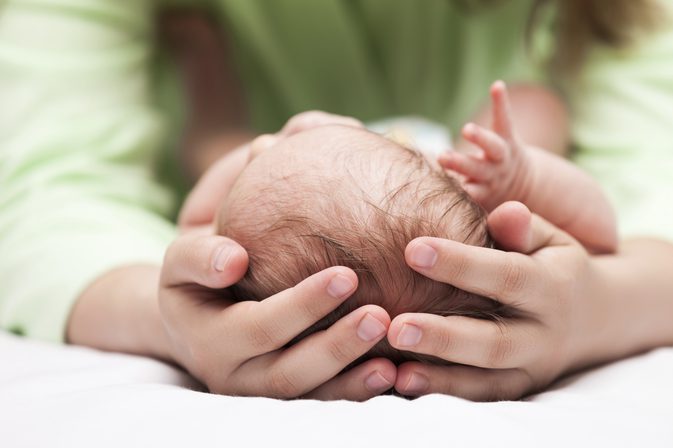
Therapeutic measures are determined by the severity of the disease. But, regardless of this, it is impossible to cure it without proper nutrition, changing your daily routine and taking medications. How can you help your baby cope with sleep disturbances, increased anxiety, sweating and other symptoms of rickets (pictured)?
Treatment for infants necessarily includes the following measures:
- As for nutrition, for children under 6 months of age, breast milk is an ideally balanced product in terms of vitamin D, calcium and phosphorus content. It is enough for mom to regularly consume meat, fish, dairy products, and butter.
- For children over 6 months of age, when treating rickets at the initial stage, it is recommended to introduce broccoli, cauliflower and zucchini puree as the first complementary food. In consultation with your pediatrician, you can add butter to your diet ahead of schedule.
- To strengthen the musculoskeletal system, massage, exercises on a fitball and swimming in the pool are recommended.
- To increase tone in weakened muscles, hardening will be effective.
- You should definitely establish a daily routine and stick to it constantly. The baby should be protected from noise, sharp sounds and other irritating factors.
- For treatment, medications containing an aqueous (“Aquadetrim”) or oily (“Vigantol”) solution of vitamin D are usually prescribed. The dosage and duration of administration are determined by the doctor, based on the stage of the disease. After successful treatment, a prophylactic dose is prescribed.
When treating rickets, it is recommended to simultaneously take vitamin complexes that increase the level of iron in the blood.
Treatment
Before treating rickets, the most important thing is to diagnose it correctly. Determine the stage of the disease, understand and eliminate the cause. Treatment can be specific or nonspecific. Nonspecific treatment includes normalizing the nutrition of mother and child, maintaining a daily routine, and active walks in the fresh air.
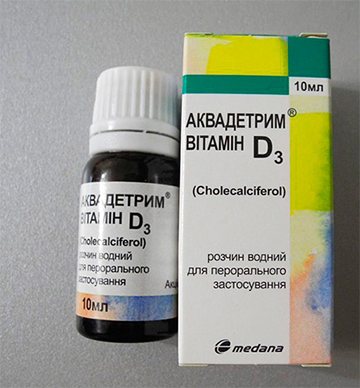
For specific treatment, vitamins, mineral complexes, and physiotherapeutic procedures are prescribed.
For mild forms, therapeutic doses of vitamin D are prescribed.
Vitamin D is the general name for five substances. D2 and D3 are used in treatment.
These are biologically active forms that provide the desired effect in the body.
International units (IU) are used to indicate vitamin content. There are 2 forms of the drug: oil and water. Preference is given to the aqueous form.
An aqueous solution of vitamin D is absorbed 5 times better than an oil solution, remains in the body longer, is well tolerated, and the effect is achieved faster. The drug has a convenient dosage form in the form of drops.
For treatment, use from 2000 to 5000 IU per day. The course of treatment is 30-50 days. To control overdose, use the Sulkovich test (calcium content in urine is determined). In case of an overdose, the test will be positive. In this case, the dose is adjusted.
In addition to vitamin D, calcium and phosphorus are prescribed. The dosage is determined by the level of these microelements in the blood. After treatment, vitamin D is prescribed in prophylactic doses of 500-1000 IU per day.
When treating rickets, one cannot do without physiotherapeutic procedures, which are carried out from 6 months. They consist of a set of activities together with massage and therapeutic exercises. The impact of physical factors is aimed at normalizing metabolic processes, stimulating the nervous system, strengthening the skeletal system and immunity.
Such procedures include irradiation with a mercury-quartz lamp, or ultraviolet radiation, which activates the formation of one’s own vitamin D.
It is possible to use a Sollux lamp, diathermy of the limbs or warming the legs with sand.
These treatments speed up blood flow, helping restore muscle function.
To restore the nervous system, pine baths are indicated. This is a simple way to calm the nervous system, strengthen the immune system, and remove toxins and waste. Medicinal electrophoresis with calcium chloride using the Vermeule method corrects the metabolism of minerals and vitamins.
For leg deformities, orthopedic treatment is indicated. An orthopedic doctor prescribes orthoses, which are selected strictly individually.
For severe bone deformities, surgical treatment is prescribed. For example, osteotomy of the lower leg bones. This is a surgical intervention during which a deformed bone is fractured and then corrected. After correction, the bone is fixed with an Ilizarov apparatus - an external structure made of knitting needles and rings. The operation is indicated if there is severe bone deformation in the child, which is not corrected by traditional therapy (massage, exercise therapy) by the age of ten.
Disease prevention

Parents should remember that breastfed children are less likely to develop symptoms of rickets (pictured). Infants may not need treatment at all if the expectant mother takes her situation responsibly. This means that disease prevention begins in the first months of pregnancy. At this time, a woman needs to walk more in the fresh air, take moderate sunbathing, drink vitamin complexes, and eat foods rich in vitamin D.
Prevention of rickets after the birth of a child consists of:
- breastfeeding;
- regular walks in the fresh air;
- hardening;
- daily physical exercise (gymnastics);
- taking vitamin D in prophylactic doses from October to April;
- sunbathing (without direct sun rays on the skin).
Consequences of the disease for children
With timely treatment, the symptoms of rickets in infants are successfully eliminated at the initial stage. If you let the disease take its course, its symptoms will only get worse every day. As a result, rickets will very quickly move from the initial stage to the middle form. This will only take a few weeks. What are the consequences of rickets suffered in infancy for children?
Among the most common of them are:
- Curvature of the joints of the lower extremities. The legs of children who have suffered from rickets take the shape of a wheel or bend inward and visually resemble the letter “X”.
- Decreased immunity. This condition may be caused by a malfunction in the metabolic processes occurring in the body.
- One of the consequences of rickets is scoliosis, which, as a rule, is diagnosed at a more mature age.
- As a result of a lack of vitamin D, the absorption of calcium in the body is disrupted. In turn, this leads to the formation of caries first on milk teeth and then on permanent teeth.
- A narrow pelvis in women can also be a consequence of rickets suffered in childhood.
To prevent the development of the disease, it is recommended to take preventive measures in a timely manner, starting from the first months of pregnancy.
Symptoms of rickets in children according to Komarovsky

The famous pediatrician has his own opinion regarding this disease, its treatment and prevention. Dr. Komarovsky lists the following symptoms of rickets in infants:
- softening and thinning of the skull bones;
- enlargement of the frontal and parietal tubercles;
- late teething with poor quality enamel;
- rachitic rosary (lumps on the ribs);
- Harrison's groove (deformation of the chest in the form of a transverse depression);
- bone deformation;
- pain or changes in bone sensitivity;
- muscle hypotension;
- growth slowdown;
- private fractures.
All of the above signs are not a reason to diagnose “rickets” without an x-ray and the results of a blood test to determine the level of vitamin D, calcium and phosphorus in the blood. It is impossible to determine the disease only by external signs.
Vitamin D in the body acts as a regulator of calcium and phosphorus metabolism, which are necessary for bone growth in a child. With its deficiency, rickets occurs. When identifying symptoms of the disease, Dr. Komarovsky recommends paying attention to skin color. The body of dark-skinned people produces vitamin D very poorly, so their risk of developing rickets is much higher.
The disease is most often diagnosed in children who are bottle-fed using unadapted milk formulas. For prevention, Dr. Komarovsky recommends daily walks in the fresh air lasting about 4 hours.
Baby's fontanel and rickets
The child is 1.5 years old, and the fontanel on his head has not yet healed. Is this a sign of developing rickets or another dangerous disease? This question worries many parents.
What is the time frame for fontanel overgrowth?
One of the indicators of the correct development of a child is a soft, pulsating fontanel. The baby has two fontanelles - small and large. At the very back of the child’s head there is a small fontanelle. It closes at the age of 1 to 2 months. The large fontanel is located almost on the top of the head, at the junction of the frontal and temporal bones. Under the skin, a large fontanel is closed by an elastic and durable membrane. Pediatricians give approximate timing for the dynamics of fontanel overgrowth: at 3 months, its size should be within 2.4-2.2 cm; at six months - 2.1-1.8 cm, by one year - the fontanel most often overgrows. However, you should not worry if the fontanel is not overgrown by the age of one year, since the dynamics of overgrowth in each child is very individual. If the child is cheerful, healthy and fully developing, then the age from 3 months to 2 years is considered completely normal for the fontanelle to heal.
If the fontanel closes earlier or later than expected?
The fact is that there are dangerous diseases in which the overgrowth or non-overgrowth of the fontanel in an infant is one of many other symptoms of a serious illness. Untimely overgrowth of the fontanel can result in a disease such as rickets, metabolic disorders, hydrocephalic syndrome, etc. One of the symptoms of rickets (lack of vitamin D) is delayed overgrowth of the fontanel. With delayed and insufficient treatment, the disease develops.
If you suspect a metabolic disorder, you should undergo examinations to determine the concentration of thyroid hormones (T4) and (TSH) in the blood, adrenal glands, and sometimes the level of growth hormone. If the diagnosis is confirmed, the child is prescribed thyroid hormone replacement treatment.
What should you pay attention to if the fontanel is visually changed?
Recession of the fontanel in a baby in the first weeks after birth is one of the signs of post-term pregnancy. Later - a signal of fluid loss or malnutrition. Often occurs as a result of diarrhea and vomiting. Accelerated overgrowth is often associated with hypervitaminosis, which can lead to increased intracranial pressure (ICP). ICP may be indicated by rapid head growth, protrusion of the eyeballs and downward abduction (the so-called “setting sun” sign). There is a refusal to drink, vomiting, regurgitation, bulging (protrusion) of the large fontanelle, and separation of the cranial sutures. To establish a diagnosis, infants are shown neurosonography using ultrasound of the skull through an open large fontanel.
Rickets
Rickets occurs mainly in children from 1-3 months to 3 years. With rickets, the bones of a sick child contain much less calcium and phosphorus than those of a healthy child. This can lead to softening of the bone tissue. It is due to an imbalance of calcium and phosphorus in the child’s body that the development of bones and teeth occurs. The consequences of rickets suffered in childhood are observed in a person for the rest of his life (for example, curvature of the spine and legs, abnormal development of teeth, etc.). Currently, rickets is extremely rare in Russia. However, poor nutrition, poor care, lack of fresh air and sunlight (lack of ultraviolet rays), and frequent child illnesses contribute to the development of this disease.
Signs of rickets
Rickets can appear as early as the 2nd month of a baby’s life. The first signs of rickets are restless behavior, poor sleep and sweating of the child's head. Sweat causes itching, the child rubs his head on the pillow, which causes baldness on the back of the head. In an infant with rickets, the edges of the large fontanel become flexible, the frontal and parietal tubercles increase, the back of the head flattens, the shape of the head changes (quadrangular), and characteristic bone thickenings form on both sides of the sternum. The teeth of children with rickets erupt late, their enamel is weak, so they deteriorate early. The muscles of children with rickets become flaccid, children begin to sit down, stand and walk later. Due to soft bones and impaired muscle function, the shape of the chest may change, it resembles a “chicken breast”. This, in turn, affects the functioning of the cardiovascular system and leads to stagnation in the abdominal cavity. In such children, the abdomen becomes enlarged, the veins become dilated, and anemia often develops. Children are susceptible to contagious diseases and their immunity is very weakened.
Prevention of rickets
Prevention of rickets should begin long before the birth of the child. That is why it is so important that during pregnancy the expectant mother spends as much time as possible in the fresh air. It is necessary to consume a sufficient amount of mineral salts contained in fresh vegetables, fruits, milk, and consume a sufficient amount of vitamins A, B, C, D.
Where can a child get vitamin D?
After birth, the baby needs to stay in the fresh air during the daytime. You often see this picture: mothers, fathers, grandmothers or grandfathers are walking with a baby who is lying in a stroller, covered from top to bottom with some windproof tulle cape. What are they afraid of? Drafts, noise from outside or flies, mosquitoes and the evil eye? In this case, I would like to say that for a child, being outside is necessary not only so that he can breathe fresh air, but so that he can be exposed to the ultraviolet rays of the sun, which, by the way, do not pass through window glass and clothing.
It is important to breastfeed a child during the first year of his life, since the baby receives vitamin D with mother’s milk. If this is artificial feeding, then adapted formulas usually include vitamin D, but cow’s milk does not have enough of it. This is especially true for premature babies, since in such children the absorption and consumption of calcium and vitamin D intake are affected.
For the prevention and treatment of vitamin D deficiency, the drug Aquadetrim vitamin D3 is prescribed. Vitamin D3 is the natural form of vitamin D that is produced in animals and humans. Compared to vitamin D2, its activity is 25% higher. However, when using this drug, it is necessary to take into account contraindications and side effects.
Children born in central Russia must be given vitamin D from 2-3 months to prevent rickets (as prescribed by a doctor) at least 400 international units per day, a premature baby - from 1000 to 1.5 thousand international units.
